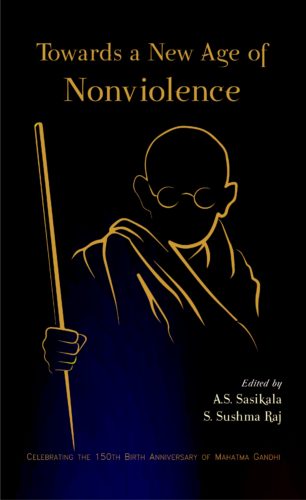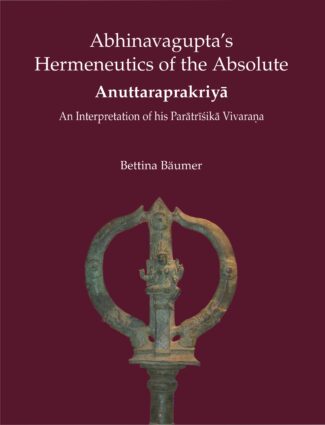

Vedanta: The Science...
Vedanta: The Science of Consciousness
Sree Narayana Guru’s Vision by: Omana SOriginal price was: ₹1,200.00.₹1,080.00Current price is: ₹1,080.00.
ISBN: 9788124611388
Year Of Publication: 2022
Edition: 1st
Pages : xxii, 385
Bibliographic Details : Bibliography, Index
Language : English
Binding : Hardcover
Publisher: D.K. Printworld Pvt. Ltd.
Foreword By : Swami Muni Narayan Prasad
Size: 23
Weight: 690
Sree Narayana Guru (1856–1928), an enlightened seer, represents Vedanta as a Science of Consciousness or pure Epistemology. This book deals with Guru’s epistemology and shows how it can eliminate many of the problems in philosophy and life.
The Guru conceives Consciousness or Arivu as the one all underlying Reality that assumes the form of everything in the world, both mind and matter.
Epistemologists are usually either idealists or realists, but the Guru is neither. To him there is no need to place one above the other since they are two manifest forms of one Consciousness.
Many eminent persons have tried to solve the problem of consciousness, but could not succeed because they were not ready to consider man as a pure being and the essence of the world as Consciousness.
To the Guru, in every event of knowing there is the coming together of subject, object and also the function of knowing. These three are Consciousness in essence. What we really need is awareness of it. All kinds of divisiveness, conflicts and crises can be solved through an awakening of the inner consciousness of man which is non-different from the one all underlying Reality titled Brahman, Atman or Consciousness.
Foreword – Swami Muni Narayana Prasad
Preface
Abbreviations
1. Introduction
What Is Epistemology?
2. The Philosophy of Sree Narayana Guru
Advaita Vedanta
A Brief History of the Guru’s Life
Education and Teaching
Publically Accepted as a Guru
Sivagiri
A New Temple Culture Begins
Janani Navaratna Manjari
Advaita Ashram
Objectives of Advaita Ashram:
Institution without Differences of Caste and Religion
All Brotherhood Meet
The Parliament of Religions
Mahatma Gandhi’s Visit
Rabindranath Tagore Visits Narayana Guru
Mahatma Gandhi Visits Narayana Guru
Sivagiri Pilgrimage
Institutions
Sree Narayana Dharma Paripalana Yogam
Sree Narayana Dharma Sangham
Narayana Gurukula
Mahasamadhi
Great Persons Who Visited Sivagiri and Pay Homage to Sree Narayana Guru
Chief Disciples
Advaita Vedanta of Narayana Guru
Atman–Brahman
The Individual
The Nature of “I”
Avidya and Vidya
The World
Maya
Aesthetics
Aesthetics as Philosophy of Beauty and Art
Svanubhava Giti (Verses 11-20)
Kali-Natakam (First 9 Lines)
Ethics
Kindness and Ahimsa
The Guru’s Concept of Caste
Varna and Jati
Jati-Mimamsa
Jati-Laksanam
Religion
Meaning, Definitions
The Role of Religion
Concept of Religion
The One Religion of the Guru
The Unique Method
God
Temples
Prayer
Daiva-Dasakam
Rites
Homa Mantra
3. Indian Systems of Knowledge
Nature and Function of Pramana
Psychology of Knowledge and Epistemology of Knowledge
Consciousness and Cognition
Types of Pramanas
Perception (Pratyaksa)
Indeterminate (Nirvikalpaka) and Determinate (Savikalpaka) Perception (Pratyaksa)
Ordinary (Laukika) and Supernormal (Alaukika) Perception (Pratyaksa)
Inference (Anumana)
Svartha (Three-Propositional Syllogism)
Aristotelian Syllogism
The Parartha Syllogism
Testimony (Sabda: Aptavacana)
Comparison (Upamana)
Arthapatti (Postulation)
Non-Apprehension (Anupalabdhi)
The Nature and Criterion of True Cognition
Theories of False Cognition (Khyativada)
4. Western Theories of Knowledge
Analysis of Knowledge
The Belief Condition
The Truth Condition
The Justification Condition
Justification of Knowledge (Foundationalism)
Coherentism
Internalism and Externalism
Reliabilism and Probabilism
Gettier Problem
The Origin of Knowledge
Scepticism
Academic Scepticism and Pyrrhonian Scepticism
Naturalized Epistemology
Evolutionary Epistemology
Phenomenology
Hermeneutics
Schleiermacher
Dilthey
Heidegger
Gadamer
From Eidetic Phenomenology to Hermeneutic Phenomenology
5. Epistemology of Narayana Guru
Arivu (Epistemology of Gnosis) (tr. Nataraja Guru)
AUM or Pranava
Neither This Nor That, but AUM
The Word and the Silence
Origin of Knowledge
Structure of Knowledge
Nirupadhika Jnana and Sopadhika Jnana
Atma-jnana and Anatma-jnana
Yathartha-jnana and Ayathartha-jnana
Jiva-jnana and Indriya-jnana
Para-jnana
Manifestation of Consciousness as “the Known, the World”
Differentiation of Bhanas
Sthula-Bhana
Suksma-Bhana
Karana-Bhana
Turiya-Bhana
Another Scheme of Self-Manifestation
Adhyasa
Validity of Knowledge
Perception (Pratyaksa-jnana)
Inference (Anumana–Anumiti-Jnana)
Comparison (Analogy–Upamiti-Jnana)
Method of Absolute Knowledge
Prerequisites for Absolute Knowledge
Tapas
The Way to a Unified Science of the Absolute:
The Western View
A New Way in Physics
Albert Einstein (1879–1955)
Erwin Schrödinger (1887–1961)
Normalization and Neutralization of Scientific Thinking
Sir Arthur Eddington (1884–1944)
Henri Bergson (1859–1941)
The Science of Sciences
Conclusion
Appendix I
Philosophical Works
Atmopadesa-Satakam
One Hundred Verses of Self Instruction: (English translation by Nataraja Guru)
Darsana-Mala: Garland of Visions (English translation by Nitya Chaitanya Yati)
Advaita Dipika (The Lamp of Non-Duality) (English translation by Nataraja Guru)
Arivu: Epistemology of Gnosis Malayalam: Quoted in Chapter 5
Brahma-Vidya-Pancakam (Brahma-vidya in five verses)
Daiva-Dasakam (Ten verses on God)
Vedanta-Sutras
Slokatrayi
Homa-Mantram (A Revelation of Agnihotra)
Nirvrti-Pancakam
Hymns
Works of Moral Value
Translations
Appendix II
Dr Zakir husain
Dr Shankar Dayal Sharma
K.R. Narayanan
Dr A.P.J. Abdul Kalam
Rajiv Gandhi
Narendra Modi
Acharya Vinoba Bhave
Jawaharlal Nehru
Shri V.V. Giri
Shri Jagajeevan Ram
Swami Chinmayanandaji
Bibliography
Index
Name Index











There are no reviews yet.